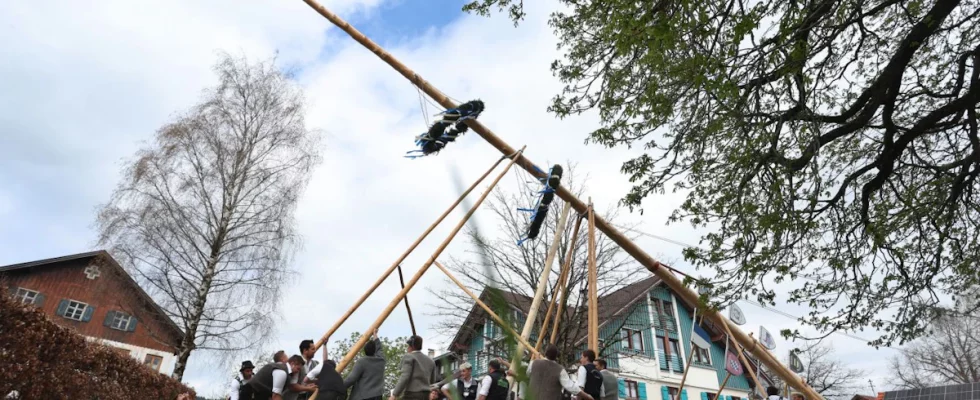May 1st in a small town in Bavaria. There is a fire station, a mailbox and almost as many bulldogs as residents. The surrounding fields are deep brown, the potatoes were planted a few days ago, and the sky is white and blue, like the garlands that they have always tied to the maypole here. The tree is taken out of the forest at 6:30 a.m. It should be 30 meters, not that the neighboring town has a higher one.
At 10 a.m. there is a white sausage breakfast at the fire station, at 10:30 a.m. the women decorate the tree, and at 11:30 a.m. the men hoist it up. With muscle power, beams and ropes and with long wooden poles with a kind of two-pronged fork attached to the end, they have been in the family for generations. The invitation was sent via the village chat on Whatsapp, otherwise everything is as it has always been.
The women are tying wreaths, the men are sweating, the mayor is grilling – everyone knows what they have to do. And then a two-year-old girl sits there, points to the maypole that has just been erected and asks an almost outrageous question: “Why?” She’s not quite comfortable with the “r” yet, but those around her have already understood her and are starting to sweat, and not just because of the May sun. Why? They’ve never thought about that here. Tradition is doing things without knowing why. But such a windy answer from the two-year-old isn’t enough. She adds again: “Why?!”
Now the guesswork and questioning begins. If you look at it closely, says a man who briefly leaves his pork neck steak for this thought, it’s somehow strange to cut down a tree, cut off all its branches, only to then hang tied branches back on it. Another remembers “some Celtic custom,” a fertility ritual. You look at the very long maypole that rises very far into the sky. Well, if that’s not a phallic symbol, what is? Sounds plausible, but is it true?
A short cell phone search, including with the SZ customs expert, reveals the following: According to experts, the phallus-Celtic strategy is “nonsense.” You also learn about the love trees, small decorated trees that unmarried men placed in front of their beloved’s door in order to win them over. Furthermore, the maypole used to be placed in front of the door of the prettiest girl and was first mentioned in Bavaria in 1550. But how do you say that to a two-year-old? You’re just about to try it when the first cakes are brought out. The two-year-old no longer wants an answer, just chocolate cake. Lucky.

